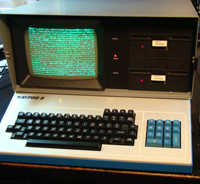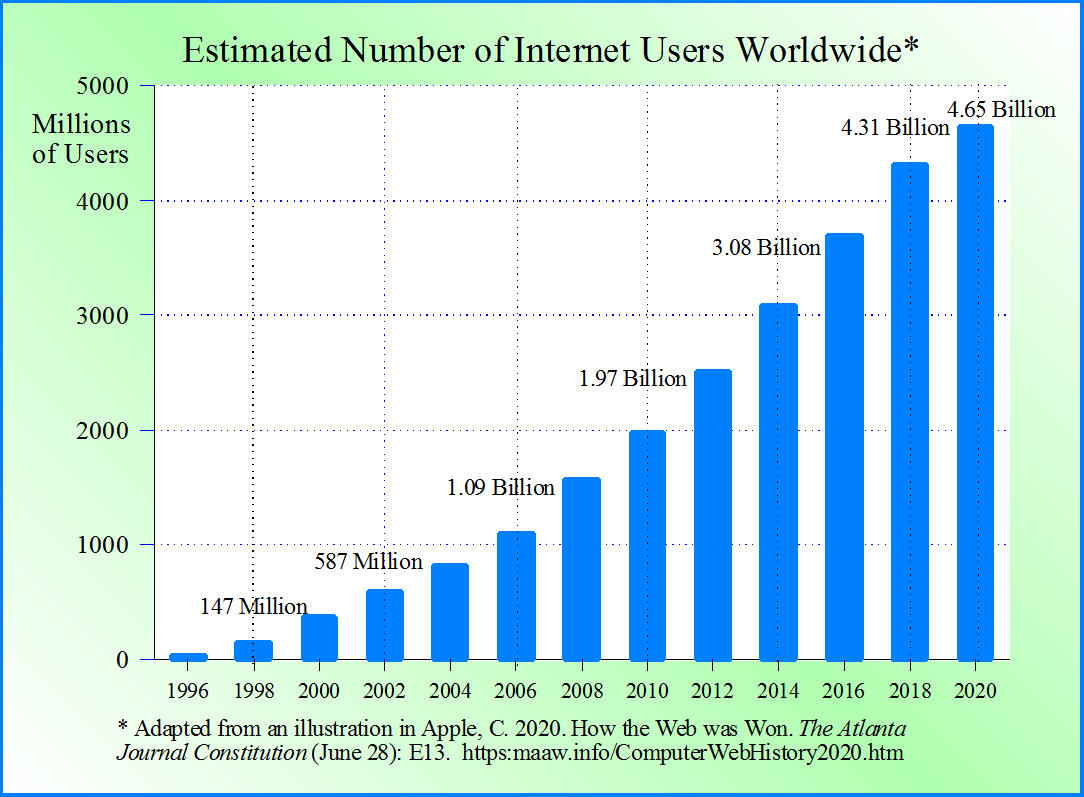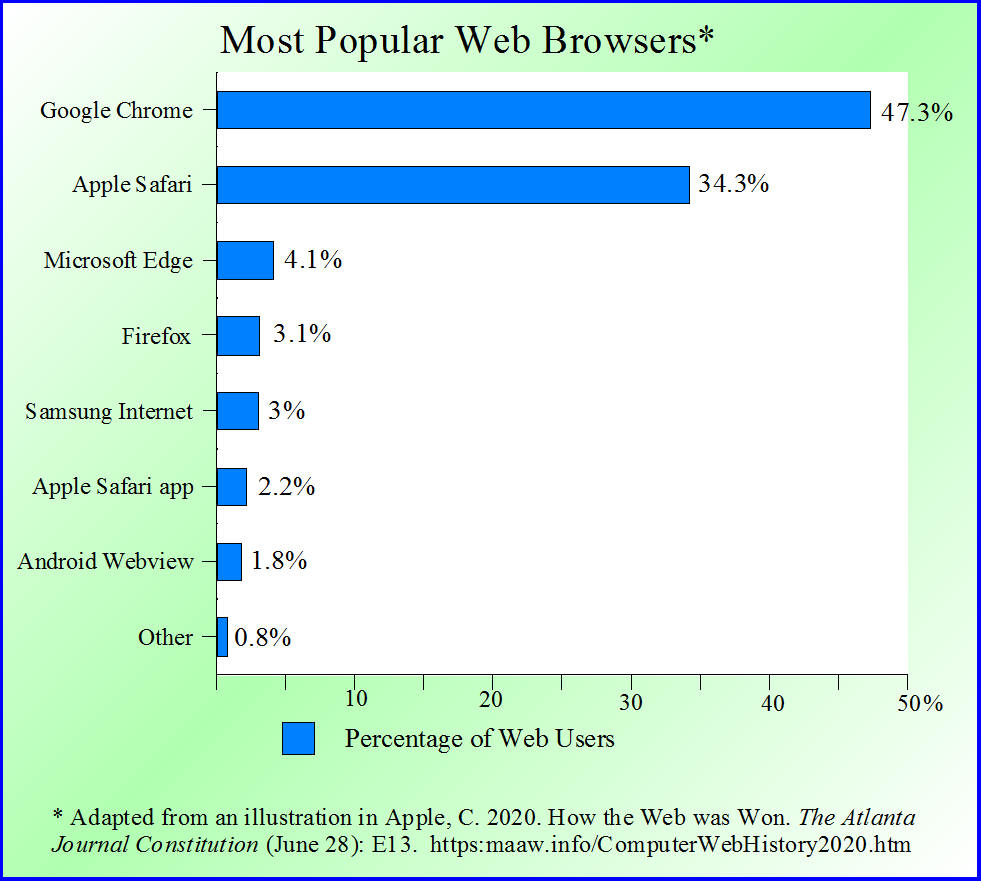
Summary by James R. Martin, Ph.D., CMA
Professor Emeritus, University of South Florida
History and Development Main Page |
Technology Related Main Page
1800-1833: Charles Babbage invented the first mechanical computer, a difference engine designed to aid in navigation calculations.
1833: Babbage developed an analytical engine that used punch cards to direct mechanical looms.
1872: The first modern analog computer was invented by Sir William Thomson. This was a tide-predicting machine.
1876: James Thomson conceptualized a mechanical analog computer, the differential analyzer.
1888: Although Babbage's project lost the funding that had been provided by the British Government, his son (Henry Babbage) completed a simplified version of the analytical engine.
1927: H. L. Hazen and Vannevar Bush at MIT built the differential analyzer based on the mechanical integrators developed by James Thompson and the torque amplifiers invented by H. W. Nieman.
1936: In a published a paper Alan Turing proposed a simple device he referred to as a "Universal Computing machine." A program, stored on tape would allow the machine to be programmable. Modern computers are said to be Turing-complete. The early machines had fixed programs that required reprogramming (re-wiring and re-structuring) to change functions.
1938: The U.S. Navy developed an electromechanical analog (digital) computer small enough to be used on a submarine. Electric switches drove mechanical relays to perform calculations.
1939: A Z2 was one of the earliest examples of an electromechanical relay computer. It was created by a German engineer named Konarad Zuse.
1941: Zuse developed the Z3 that had 2000 relays and operated at a clock frequency of 5-10 Hz. The code was on punched film.
1942: John Vincent Atanasoff and Clifford E. Berry of Iowa State University developed the Atanasoff-Berry Computer. It was the first automatic electronic digital computer. It used about 300 vacuum tubes with capacitors fixed in a rotating drum for memory.
1944: Colossus, the first electronic digital programmable computer was developed by Tommy Flowers who had been commissioned by Max Newman and his colleagues to attack to German encryption machine, Enigma.
1946: The first electronic digital programmable computer built in the U.S. is introduced, the ENIAC (Electronic Numerical Integrator). The ENIAC was faster and more flexible than Colossus. It was programmed by six women known as the "ENIAC girls."
1951: The first fully electronic computers are used in England. The UNIVAC 1 is delivered to the Census Bureau and some large corporations.
1957: The first computer time-sharing systems were developed.
1962: The Dartmouth Time-Sharing System was the first large-scale time sharing system to be implemented successfully.
1967: ARPANET (the U.S. Defense Department's Advanced Research Projects Agency Network) is created. It was mainly uses by researchers communicating via typed commands on bulletin boards.
1969: Telnet protocol allowed users to remotely emulate the terminal of another computer.
Network Control Protocol (NCP) allowed sharing of resources between computers.
1972: File Transfer Protocol (FTP) allowed files to be shared remotely.
1975: Transmission Control Protocol (TCP) allowed resource sharing between networks other than the ARPANET.
1977: Steve Jobs and Steve Wozniak established Apple Computer in a garage. They introduced the Apple 2, the first fully assembled personal computer.
1978: Internet Protocol (IP) separated some networking functionality from the simple act of passing packets.
1979: The VisCalc spreadsheet is introduced.
The Osborne 1 portable CP/M based computer is introduced with a 5 inch screen, two floppy-disk drives, 64K or RAM and it could fit under a airplane seat.
1980: June 23. Tim Berners-Lee, an English computer scientist at CERN (physics lab in Switzerland) began working on a project referred to as ENQUIRE. This project would lead to the development of hypertext (HTML) and the World Wide Web. Hyperlinks are what connects the different systems together.

1981: Kaypro Corporation began designing a personal computer named the KayComp. This became the Kaypro II, a CP/M based computer set in an aluminum case, with 64K of RAM, and two 5¼-inch floppy disk drives. It weighs 29 pounds and originally sold for $1,795. The 9 inch screen or CRT was larger than the Osborn's 5" screen. (The Kaypro II on the right was my first computer).
1983: January. TCP/IP was officially adopted by the ARPANET to allow interchange between the ARPANET and other networks around the world.
Compaq introduced the first IBM compatible PC.
1984: The Network Filing System (NFS) developed by Sun Microsystems provided a distributed file system.
The Andrew File System (AFS) was developed by Carnegie Mellon University and provided a campus-wide file system.
1985: November. Windows 1 is released. The shell for Windows 1 is a program known as MS-DOS Executive.
1986: Intel delivers the 386, the first 32-bit PC processor.
1987: Video Graphics Array or VGA premieres.
December. Windows 2 is released.
1989: March 12. Tim Berners-Lee proposes to develop a language that would link computers around the world. This language became HTML and the subsequent network became the World Wide Web.
1990: December 25. Berners-Lee builds the core of the World Wide Web and began distributing his work to the public.
Windows 3.0 is released.
Alan Emtage at McGill University invented Archie that allowed searching and indexing files that were available on the internet through FTP.
1991: August 6. Berners-Lee post the world's first website at CERN. The World Wide Web is launched.
December 9. The High Performance Computing and Communication Act (introduced by Senator Al Core) leads to connecting existing networks that became known as "the information super highway" and provides funding for developing Mosaic, the worlds first popular web browser.
Bob Alberti, Farhad Anklesaria, Paul Linder, Mark MacCahill and Daniel Torry at the Microcomputer and Workstation Networks Center of the University of Minnesota developed the Gopher client program. This allowed users to browse the hierarchy of files for what they were looking for. This Campus Wide Information System (CWIS) became Gopherspace and was used by thousands of people around the world.
The Stanford Linear Accelerator Center (SLAC) became the first web server in the United States.
1992: March. Windows 3.1 was made available.
Steven Foster and Fred Barrie at the University of Nevada at Reno released Veronica (Very Easy Rodent-Oriented Net-Wide Index to Computerized Archives). Veronica provided a searchable index of Gopher menus.
1993: April 22. The National Center for Super-Computing Applications at the University of Illinois makes Mosaic free on its website.
July. Windows NT 3.1 is released with versions for desktop workstations and servers.
1994: Berners-Lee establishes the World Wide Web Consortium at MIT. He has severed as the Director of web standards for the past 26 years.
January. At a nationally televised conference at UCLA, the key note speaker (Al Gore) recommends private investment in the web, for governments and industry to help get schools connected quickly, and for universal access.
January. Two Stanford University students create "Jerry and David's Guide to the World Wide Web." Two months later they change it to Yahoo!
July 5. Jeff Bezos creates an online mail-order book retailer named Cadabra. His lawyer mishears it as Cadaver. A year later Bezos changes the name to Amazon.
October 13. Marc Andreessen and other Mosaic developers launch an updated version of Mosaic called Netscape.
October 21. The first official White House website is opened at whitehouse.gov. Users who type in whitehouse.com get a porn site.
Windows 3.2 is released.
Windows NT 3.5 is released and focused on performance improvements and support for Novell's NetWare.
1995: August. The NCSA licenses Mosaic to Microsoft. A modified version is created and named Internet Explorer.
Windows 95 launches turning what was a shell on top of DOS into a complete operating system. This effectively kills MS-DOS.
1996: Two Stanford Ph.D. students create a search engine called Backrub. It became too popular and was forced off the university's servers. Later it became Google.
July. A web browser called Opera 2.0 is introduced by the Telenor company of Oslo, Norway.
July 17. President Bill Clinton signs an executive order asking federal agencies to utilize information technology to make data available to the public.
USB emerges and vastly improves the chore of hooking up keyboards, mice, and cameras. This leads to the USB flash memory industry.
Windows NT 4.0 is released.
There are approximately 36 million internet users world wide.
1998: February. Netscape initiates the Mozilla project that will create an open-source browser.
May. The U.S. Department of Justice files an antitrust case against Microsoft. Their argument was that Microsoft was abusing its position by bundling Internet Explorer with Windows. The case is not resolved until 2001.
November. AOL buys Netscape for $4.2 billion. AOL discontinues support for the browser four months later.
June. Windows 98 is released.
1999: The first 802.11 standards for wireless networking are adopted. The Wi-Fi Alliance is founded to promote and certify products.
March 9. In an interview with CNN's Wolf Blitzer Al Gore made a comment about the internet that was misinterpreted, frequently misquoted and quoted out of context. Although he was widely ridiculed for implying that he created the internet, what he actually said was, "During my service in the United States Congress, I took the initiative in creating the internet. I took the initiative in moving forward a whole range of initiatives that have proven to be important to our country's economic growth and environmental protection, improvements in our education system." (Wikipedia).
2000: March. Thousands of web-based companies have gone public raising millions of dollars. This causes the Nasdaq Composite market index to reach an all-time high. News revealing that few of these new dot.coms were profitable causes the market to crash.
May 4. An internet virus called ILOVEYOU launched in the Philippines spreads to 500 million Windows based computers worldwide. The Pentagon and CIA temporarily disconnect from the web.
September. Windows ME (Millennium Edition) is released.
September 14. Gore pokes fun at his own statement about the internet by reading a top 10 list on the "Late Show with David Letterman." No. 9 on the list: "Remember America, I gave you the internet and I can take it away."
2001: Windows XP merges Windows 2000 and ME into a unified 32-bit operating system.
Napster, a site for swapping music mp3 files is ordered to shut down by the U.S. Court of Appeals for copyright violations.
2002: The rise in user-generated content including blogs and wikis signals the beginning of "web 2.0."
Electronic signatures are allowed for e-filed tax returns.
Tablet PCs debut.
2003: January. Apple launches its own native browser, Safari.
Mozilla converting into a non profit organization.
2004: February 4. Mark Zuckerberg launches Facebook (or the Facebook) as a social network for Harvard University. It expands to eight other universities in the following month.
February. Mozilla released its Firefox web browser.
2005: February 14. Three PayPal employees create YouTube.
2006: Facebook increases its pool of users to include anyone over the age of 18.
November. Windows Vista was released.
2007: Windows 7 is released.
2008: September. Google Chrome is released for the PC. A Mac version follows in June.
Windows 8 debuts and replaces the start menu with the controversial start screen.
2009: June Microsoft launches its Bing search engine to complete with Google.
2012: October. Windows 8 was released.
2014: July. Windows 10 was released. There are other versions of Windows, e.g., Windows CE (embedded compact) and Xbox OS that have specific uses.
2015: The Federal Communication Commission votes to prohibit internet carriers form providing unequal service (e.g., speed and bandwidth) to users. This becomes know as "net neutrality."
2017: The Trump administration rolls back the "net neutrality" regulations.
2018: The number of worldwide internet users had increased to approximately 4.3 billion.
2020: The number of worldwide internet users has increased to approximately 4.65 billion.


______________________________
*Source materials:
Apple, C. 2020. How the Web was Won. The Atlanta Journal Constitution (June 28): E13.
Lee, C. Not dated. Where have all the Gophers gone? Why the web beat Gopher in the battle for protocol mind share.
Martin, J. R. Not dated. 200 years of accounting history dates and events. Management And Accounting Web. Accounting History Dates And Events
Wikipedia